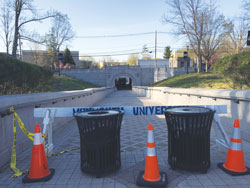Students Will be Able to Calculate the Exact Cost of Their Possible Schools
 Students applying to college this fall have a new tool to help them compare costs at various campuses. This month, so called “net price calculators” will appear on the websites of colleges nationwide, giving students and parents an idea of how much financial aid they could receive months before a formal offer arrives.
Students applying to college this fall have a new tool to help them compare costs at various campuses. This month, so called “net price calculators” will appear on the websites of colleges nationwide, giving students and parents an idea of how much financial aid they could receive months before a formal offer arrives.
The idea behind the calculators which are required by federal law to be posted on college websites by October 29 is that many students are discouraged from applying to a university when they see the price. A year of tuition, books, room and board now totals $30,000 at many public universities and north of $50,000 at many private ones.
But that’s what experts call the “sticker price” the amount paid by students who don’t get any financial aid. At many schools, the typical student receives aid and pays less than the school appears to cost. The “net price” the new devices calculate is the sticker price minus grants the student could expect based on family finances and, in some cases, academic performance.
“I think it’s really good for net price to be a concept that’s out there, for more people to understand that the sticker price is not the price they usually pay,” said Sandy Baum, an economist at the George Washington School of Education and Human Development who specializes in college costs.
But while the online calculator is helpful, she said, “it’s not a perfect tool.”
Whether the new calculators will revolutionize the college search or add more confusion to the process remains to be seen.
Some are hard to use because they require students to input extremely detailed financial information. Others are hard to find because they’re buried deep on a college website.
Colleges even vary in what they call the calculators names include financial aid estimator, student aid calculator and net price calculator so searching for them can be tough.
Jill Yoshikawa of Sacramento recently began using the tools in counseling high school students in the college application process.
“There is so much variety. Some are pretty elaborate, others are pretty basic,” said Yoshikawa, who runs Creative Marbles Consultancy. But, she said, the calculators are worth plugging through because they “give families a reasonable estimate.”
That estimate is useful for planning, Baum said, whether students are starting college in a year or five years.
On chat boards where people dissect the college application process, parents are posting mixed reviews of the new calculators.
“This tool is one of the best innovations in financial aid,” a user with the handle Rockvillemom wrote on CollegeConfidential.com.
“My son’s university has had theirs up for a few months. I was able to plug in the current year info and compare the calculator results to the actual package we rcvd very similar. This gives me a lot of relief in knowing that I can use this calculator to predict next year’s pkg with some degree of accuracy. Wish this had been developed a few years ago!”
Others weren’t so enthralled.
“It does not work for me,” wrote Nugraddad who said he lives in the Chicago suburbs.
“I filled out the U of MN calculator, and it indicates that our family should pay @ $7,000 per year we can actually afford $0.00, AND my son needs to take out $7,000 in loans. It also does not include any way of entering and/or estimating merit/scholarship money, and my son should qualify for big money.”
The tools do not offer an apples-to-apples comparison. For example, the calculator for Santa Clara University, a private school, shows how much scholarship money an applicant could receive, while the University of California calculator does not include grants a student would receive because of academic or athletic talent it only gives information on aid based on family finances.
The California State University system has not posted its calculator yet. Spokesman Michael Uhlenkamp said the calculators will likely appear on CSU websites toward the end of the month.
UC, on the other hand, was ahead of the curve when it posted its calculator in 2008. It was among a handful of universities nationwide that launched the calculators three years before the federal requirement kicks in, said Nancy Coolidge, associate director of student financial support.
“We don’t want to tell everybody just the sticker price, because more than half our students don’t pay the sticker price,” she said.
But users need to remember that the calculator gives an estimate of financial aid not a promise, said Katy Maloney, director of financial aid at the University of California, Davis. The numbers on their formal financial aid offer could be vastly different, she said, if people put erroneous information in the calculator, then properly fill out their financial aid application.
“I think it’s a good thing overall as long as people understand it’s totally based on the accuracy of the information you put in there,” Maloney said.
And that leads to another inconsistency with the calculators: How much information they ask of users.
A Bay Area student advocacy group called the Institute for College Access and Success analyzed more than a dozen net price calculators. It found that some ask users about 10 questions, while others ask more than 40.
“Asking dozens of questions may lead to a more precise net price estimate,” the report says. “But it can discourage students from finishing the process and getting any estimate at all.”



